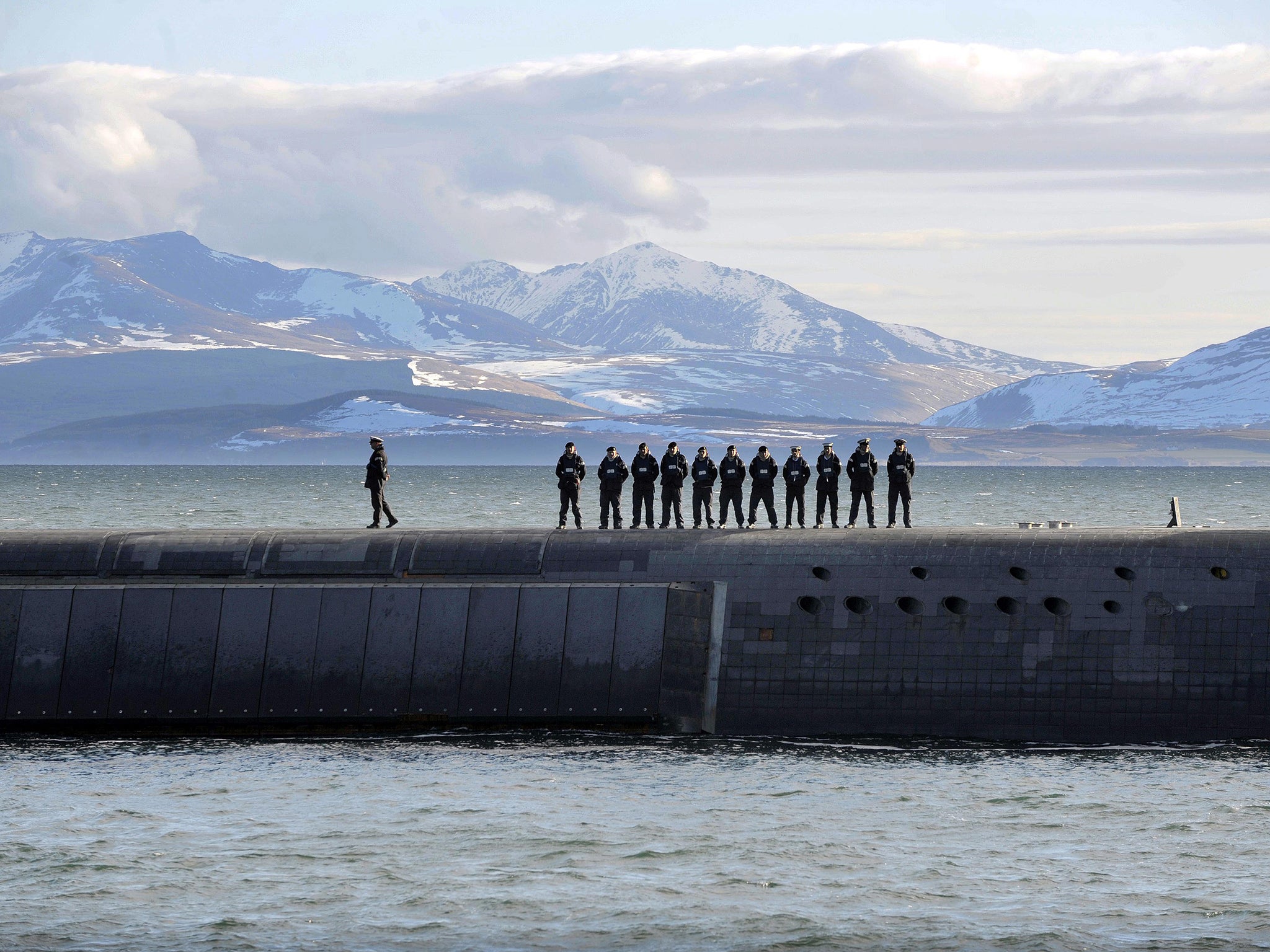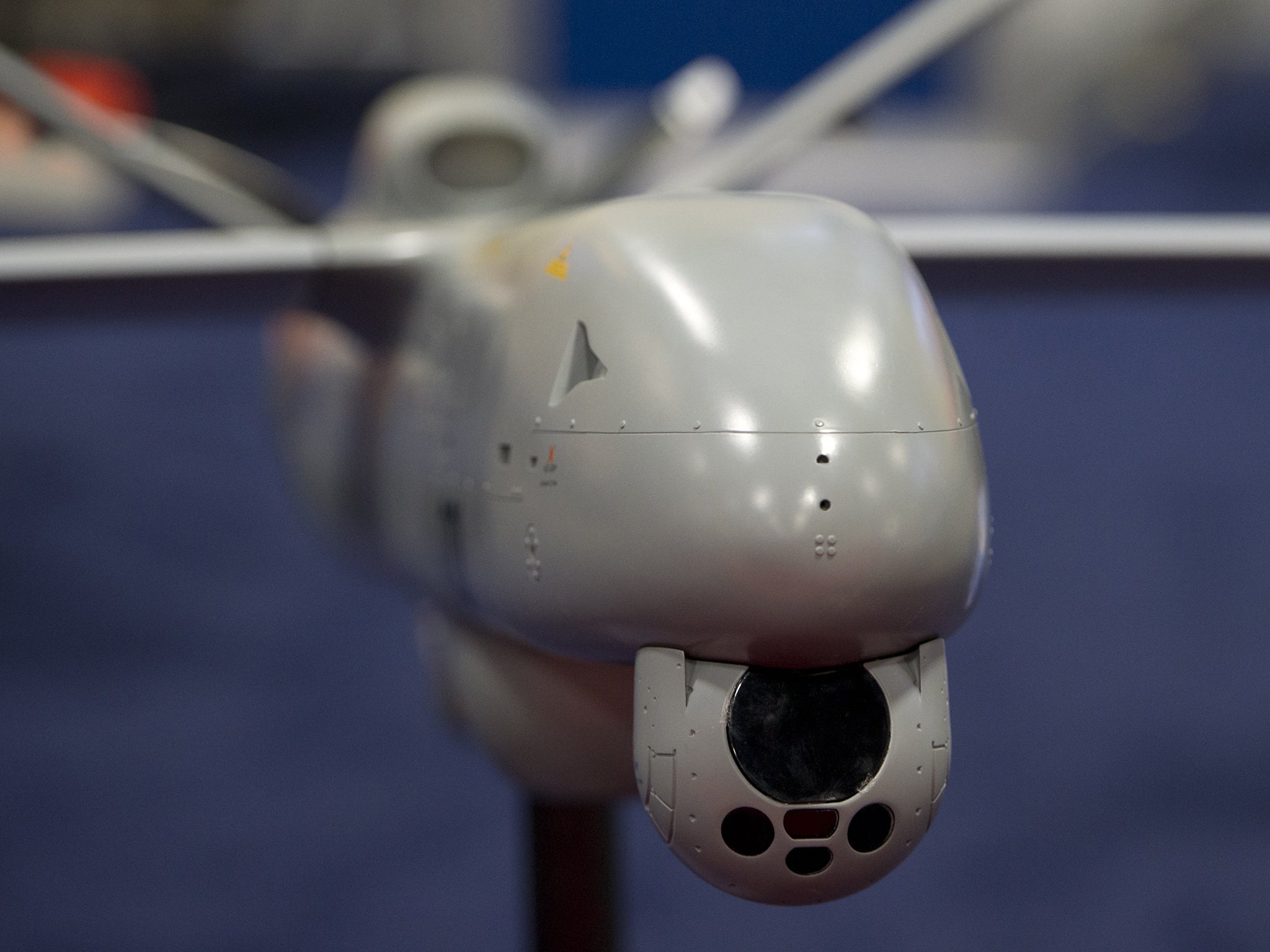Drone technology a threat to Trident submarines, MPs to be told
Report by think-tank says Britain’s nuclear deterrent could be worthless before it is even launched

The controversial idea that Britain’s nuclear submarines could be rendered irrelevant before the new fleet is even launched, will be bolstered this week by a report to be presented to MPs examining the Trident programme. Emerging drone technology, which could make the oceans “effectively transparent”, will make the submarines that carry the UK’s nuclear deterrent vulnerable to attack, warns the report which was commissioned by the British American Security Information Council (Basic), a nuclear disarmament think-tank.
The report, to be presented to MPs on the Defence Select Committee this week, says rapid advances in technology mean the world’s oceans are becoming a “sensor rich” environment full of drones with “eyes and ears everywhere”. As a result there will be “no hiding place for submarines.”
If Britain’s submarines become easily detectable they will lose “all their advantages as strategic weapons platforms”.
The Defence Select Committee has written to BAE and Babcock, constructors of the UK submarine fleet, asking them to respond to the drone threat claims.
The report is a fillip for Emily Thornberry, the shadow Defence Secretary, who has faced fierce criticism of her review of the Trident replacement programme. Her suggestion that drone technology posed a threat to nuclear submarines, thereby diminishing the potency of the nuclear deterrent, has been ridiculed as “tired old science fiction”.
Lord Hutton, the former Defence Secretary, speaking on Radio 4’s Today, described the idea that technological advances posed a clear danger to Trident as “camouflage for those who want to espouse unilateral disarmament”.

Ms Thornberry said that “serious questions have been raised about whether the successor submarines will be redundant before they even hit the water and we need to look at this very carefully before we commit to spending £41bn on them. ”
The Basic report makes it clear that advanced drone technology is far from sci-fi fantasy and is already being used in anti-submarine warfare by the US and Chinese navies.

Air-dropped drones and underwater craft called gliders are employed to track enemy submarines. The US Navy is known to use relatively low-cost Coyote drones, launched from aircraft and fitted with Magnetic Anomaly Detectors, to hunt for subs. Similar technology is employed on Chinese built drones the report says.
Improved sensors, based originally on designs to detect and measure tiny magnetic fields generated by the human brain, will revolutionise drone capabilities, the report states.

Another technique employed is to borrow the soaring approach of albatrosses and other ocean-going birds. Drones imitate the birds by turning into the wind to gain altitude then glide downwards.
The US has produced drones that can land on the sea, re-deploy its wings as sails and recharge, allowing it to take off again later. Another research project is examining air drones that can land at sea and then propel themselves underwater.
Unmanned underwater craft, or gliders, also pose a threat to submarines. With greater endurance abilities they have been used to track the Deepwater Horizon oil spill, as well as radiation levels around Fukushima in Japan. They are extremely quiet and can carry acoustic sensors so sensitive they can, as one researcher put it, “hear a fish fart”. Unsurprisingly, they have been used to track fish shoals by the sounds they make.
Commercial gliders are being used by oceanographers to collect data on water temperature and cloudiness, salinity and ocean current speeds. Japanese scientists are examining proposals to deploy about 1,000 gliders to form a network to measure and survey the oceans, the report says.
China is particularly interested in the unmanned underwater craft and the report cites a 2010 US Department of Defence report which noted the Chinese were targeting this technology specifically.
Paul Ingram, the chief executive of Basic, said: “In the past anti-submarine warfare has been carried out by a small number of highly capable ships and manned aircraft. Their task has been like that of a handful of police looking for a fugitive in a vast wilderness. Lacking the manpower to cover the whole area, they have to concentrate their forces on the most likely paths and hideouts, and hope for a lucky break.
With the advent cheap drones, the police are joined by thousands more searchers, who are less well-equipped but have the numbers to walk shoulder to shoulder and sweep the entire area. Escape becomes impossible.”
Parliament is expected to vote on the future of Trident later this year.
Join our commenting forum
Join thought-provoking conversations, follow other Independent readers and see their replies
Comments